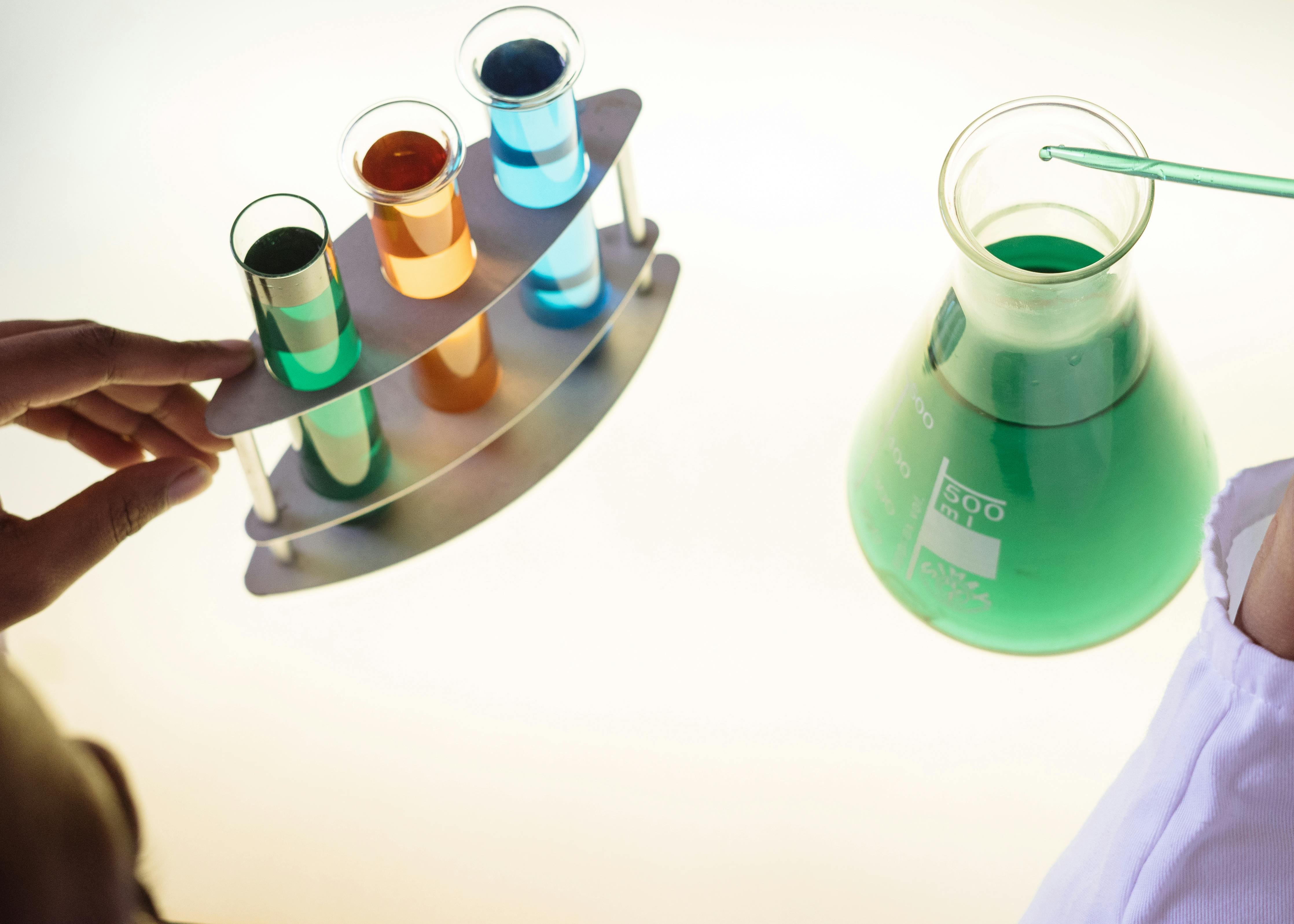
Designing and Analyzing Experiments: From A/B Testing to Multivariate Trials
Introduction
In the fast-paced digital world, the art and science of experimentation have taken center stage. Whether you run an online store, manage a content platform, or oversee a major social media campaign, the decisions you make can have immediate and far-reaching effects on user engagement, conversion rates, and overall profitability. However, making these decisions solely on intuition or past experience can be both risky and costly. That is why experiment design has become an indispensable part of modern digital marketing and product management.
Designing and analyzing experiments allows businesses and researchers to test hypotheses, measure outcomes, and implement changes that are backed by concrete data. By running well-structured experiments, you can systematically determine whether a particular change — such as a new homepage layout, a different call-to-action (CTA) button color, or revised pricing — genuinely drives improvement. This data-driven approach not only mitigates risk but also empowers organizations to innovate and grow in a methodical, iterative manner.
Among the various types of digital experimentation, two methodologies frequently stand out: A/B testing and multivariate testing. A/B testing has become almost ubiquitous; it's simple to implement and interpret, providing a clear winner between two (or a few) variants. Multivariate testing, on the other hand, allows for a more complex exploration where multiple elements on a page or in a campaign are tested simultaneously. Despite being more resource-intensive, multivariate testing can reveal intricate interactions among different components of your user experience.
In this comprehensive guide, we will explore the theory and application of these experimental techniques. We will walk through the basics of experiment design, delve into the nuances of A/B testing, uncover advanced A/B strategies like multi-arm bandit algorithms, and then transition into the world of multivariate testing. Along the way, we'll discuss real-world examples, share actionable insights, and point out the common pitfalls. By the end, you'll not only understand how to set up, run, and interpret these experiments, but you’ll also know how to incorporate them into a continuous optimization strategy that propels your organization forward.
Whether you’re a marketer, product manager, data analyst, or business owner, having a firm grasp on experimental design can transform your approach to decision-making. Let's dive in.
1. Understanding Experiment Design in Digital Marketing

Experiment design is the systematic planning of a study to ensure that you gather the most relevant and accurate information for your research question or business objective. In the context of digital marketing, experiment design often focuses on optimizing user experiences, conversion funnels, and overall digital performance. The goal is to identify how changes to your website, advertising campaigns, or mobile apps affect key metrics such as click-through rate (CTR), conversion rate, average order value, or user retention.
The importance of experimentation in digital marketing can’t be overstated. Modern consumers have a wide range of choices and are quick to abandon brands that don’t meet their needs. Running experiments provides insights into user preferences, highlights friction points, and empowers teams to fine-tune the user journey. When decisions are made based on data — rather than hunches or internal politics — you reduce guesswork and foster a culture of continuous improvement.
One real-world example of successful experimentation can be seen in major e-commerce platforms. Platforms such as Amazon are renowned for their extensive testing practices, where everything from the size of product images to the shade of the ‘Add to Cart’ button is scrutinized for its impact on user behavior. Similarly, streaming services like Netflix have experimented with how they display show recommendations and artwork to maximize user engagement and content discovery. These industry leaders didn’t arrive at their user interfaces by chance; they tested relentlessly to ensure that every design element is optimized for the best possible performance.
By committing to experiment design, you gain the ability to test multiple hypotheses quickly and effectively, ensuring that your digital marketing efforts resonate with your target audience. This structured approach leads not only to immediate improvements but also to a wealth of data that can inform future endeavors. It's a powerful cycle: formulate a hypothesis, run an experiment, analyze the results, implement changes, and repeat.
2. A/B Testing: The Basics

A/B testing, also known as split testing, is one of the simplest yet most powerful tools in the experimentation toolkit. In an A/B test, you compare two versions of a single element — for instance, Version A (the control) and Version B (the variant) — to determine which version performs better based on a defined metric such as click-through rate or conversion rate.
The basic premise is straightforward: you randomly assign users to either the control group (A) or the variant group (B). By measuring the performance of each group and applying statistical analysis, you can infer whether one version significantly outperforms the other. If the difference is statistically significant, you can be confident that the variation you introduced is responsible for the observed change in user behavior, rather than random chance.
A typical A/B test includes the following components:
- Hypothesis: Before initiating the test, you clearly state what you expect to happen and why. For instance, “Changing the CTA button color from green to orange will increase the click-through rate by at least 5% because the new color stands out more.”
- Control (A): The current or standard version that you’re using. This serves as your baseline or reference point.
- Variant (B): The new version that you want to compare against the control. This variation might include a different color, copy, layout, or any other element you believe could influence user behavior.
- Traffic Allocation: You split the incoming user traffic between the control and the variant. Often this is a 50/50 split, but you can adjust the ratio as needed.
- Success Metrics: You define the primary metric that determines success. This could be something like conversion rate, user engagement, or average time on site, depending on your objectives.
To set up an A/B test:
- Identify the element or feature: Determine which component of your website or campaign you want to optimize. This could be a headline, product image, CTA button, or even an email subject line.
- Create the variant: Develop an alternative version of that element. The key here is to isolate just one major change so that you can clearly determine its impact.
- Define your success metric and sample size: Decide which metric most clearly aligns with your business goals, and calculate how many visitors or impressions you need before you’ll have enough data to make a statistically robust decision.
- Run the experiment: Use an A/B testing tool to deliver the two versions randomly and collect data on performance. Platforms like Google Optimize, Optimizely, or VWO are popular choices.
- Analyze the results: Once you’ve reached your desired sample size, determine whether the variant performed better or worse than the control based on your success metric.
One of the most common pitfalls in A/B testing is ending the test too early. If you halt the experiment as soon as one variant shows a favorable difference, you risk what is known as a false positive. To avoid this, always determine your required sample size or test duration beforehand and stick to it. Also, ensure that you have a well-defined hypothesis and focus on a single variable at a time, as testing multiple changes simultaneously can make it difficult to pinpoint which specific change drove the results.
3. Advanced A/B Testing Techniques

While a simple A/B test can yield valuable insights, more advanced techniques can enhance both the efficiency and depth of your experiments. One such approach is the multi-arm bandit algorithm, a method borrowed from reinforcement learning. In a conventional A/B test, you typically split traffic evenly (for example, 50/50) between the control and the variant until you reach a predetermined sample size. With a multi-arm bandit approach, traffic allocation is more dynamic: as soon as one variant shows signs of better performance, more visitors are automatically funneled to that variant.
This dynamic reallocation can save time and resources, particularly in fast-paced environments. You effectively exploit early indicators of success without waiting until the end of the test period to take advantage of a winning version. However, multi-arm bandit methods come with their own complexities. For one, it can be harder to compare results between variants that don’t receive equal traffic. You also need to decide on a suitable exploration-exploitation trade-off, meaning how aggressively you shift traffic based on partial results vs. how much you continue to explore all options to collect robust data.
Another crucial element of advanced A/B testing is understanding statistical significance and sample size. Statistical significance tells you how likely it is that your observed difference in performance didn’t occur by chance. Researchers commonly use a p-value threshold of 0.05 (5%), but the choice depends on your tolerance for risk. You also need to determine the effect size you consider meaningful. If you’re only interested in detecting large changes in conversion rate, you need a smaller sample. If you want to detect subtle differences, you’ll need to run your test longer or allocate more traffic.
Once you’ve gathered your data, you’ll typically use either frequentist or Bayesian statistical methods for analysis. A frequentist approach relies on p-values and confidence intervals, while a Bayesian approach calculates the probability that one variant is better than another, given the observed data. Bayesian methods can be more intuitive for stakeholders who want a direct probability statement (e.g., “There’s an 85% chance Variant B is better than Variant A”), but frequentist methods remain the mainstay in many tools and organizations.
Ultimately, the more advanced your testing framework, the more you can learn about your audience and the faster you can capitalize on positive changes. However, with increasing sophistication comes increasing responsibility: you need a thorough understanding of the underlying statistics and algorithms, along with a solid plan for how you’ll act on the results. This balance between complexity and clarity is a theme you’ll see again when we discuss multivariate testing.
4. Introduction to Multivariate Testing

Multivariate testing is a more complex approach compared to A/B testing. While A/B testing typically involves one major change at a time (e.g., a new headline or a different button color), multivariate testing involves simultaneous variation of multiple elements. For instance, you might test different headlines, button colors, and background images all at once, creating numerous combinations of these elements.
The goal of multivariate testing is to identify not only which individual elements perform best, but also how these elements interact with one another. In some cases, certain combinations of headline and image might work far better together than you would predict based solely on individual performances. Understanding these interactions can lead to deeper insights and potentially higher gains.
However, the trade-off is increased complexity. The number of test variations can quickly multiply, which means you need more traffic to test all the combinations adequately. If your website or campaign doesn’t attract a significant number of visitors, your data may be spread too thin, leading to inconclusive or delayed results. Furthermore, analyzing and interpreting multiple variables can be more challenging.
Despite these challenges, multivariate testing can be incredibly valuable when you suspect that multiple elements of your page or campaign might be contributing to success or failure. By running a single test that examines multiple variations, you can gain insights more quickly than by sequentially running a series of A/B tests. Deciding when to use multivariate testing often comes down to balancing your available traffic, resources, and the complexity of the design changes you want to explore.
5. Designing a Multivariate Experiment

When designing a multivariate experiment, the first step is to identify the key elements you want to test. These elements should be directly related to the user experience and should plausibly influence your primary success metric. For instance, if your landing page aims to capture email sign-ups, you might consider testing the headline, the description text, the layout of the form, and the color or text of the sign-up button. Each of these elements (factors) can have two or more variations (levels), leading to multiple permutations.
Once you’ve identified your factors and levels, you need to plan how to manage the interactions. In the simplest form of multivariate testing (a full factorial design), every variation of each element is tested against every variation of the other elements. This can result in a large number of combinations — for example, testing three factors each with three levels results in 3x3x3 = 27 variations. If you don’t have sufficient traffic to allocate among all these versions, you can consider a fractional factorial design. Fractional factorial testing allows you to test a subset of combinations while still providing insight into main effects and some interactions, at the cost of missing certain higher-order interactions.
Here are a few tips for successful multivariate experiment design:
- Start with a strong hypothesis: Multivariate testing can become unwieldy if you test everything without a clear rationale. Focus on key elements that you genuinely believe will affect performance.
- Prioritize interactions: Decide which interactions between elements are most critical. Are you primarily interested in how the headline interacts with the button color? Or do you suspect that background images significantly impact how users read the text?
- Plan your traffic allocation: Multivariate tests require a higher volume of traffic to achieve statistical significance for each combination. Ensure that you have enough visitors to feasibly run the test in a reasonable timeframe.
- Use a robust testing platform: Tools like Google Optimize, Optimizely, or Adobe Target can handle multivariate setups. Ensure that your chosen platform supports the type of experimental design you need.
While setting up a multivariate test may seem daunting, a well-thought-out design ensures that your data will be both meaningful and actionable. By controlling which elements change and how you measure success, you can discover not only which elements matter most but also how they work together to influence user behavior.
6. Analyzing Results from Multivariate Trials

Interpreting results from a multivariate test can be more intricate than analyzing a straightforward A/B test. You’re not just comparing two groups; you’re comparing multiple versions across several dimensions, and you may also be interested in how these versions interact.
The analysis typically begins with examining the main effects of each individual factor. For example, does headline A outperform headline B and headline C on average, regardless of which background image is shown? Once you identify which factor levels perform best individually, you can move on to interaction effects. An interaction occurs when the performance of one factor depends on the level of another. For instance, maybe the combination of “headline A” and “button color B” outperforms every other pair, even if “headline A” and “button color C” don’t show any improvement.
Statistically, you can use Analysis of Variance (ANOVA) techniques for multivariate data, though specialized software or testing platforms often simplify this process. Many modern analytics tools provide visual representations of how each factor (and factor combination) influences the outcome. Look for color-coded charts, performance heat maps, or 3D plots that illustrate the various interactions.
Once you’ve identified the best-performing combination, the final step is to validate your findings by rolling out the winning design or configuration. However, it’s prudent to remember that user behavior can change over time. Seasonality, external events, or evolving user preferences can shift how individuals respond to your site or campaign. Thus, continuous or iterative testing remains vital.
Above all, the focus should be on turning test insights into actionable improvements. If your analysis reveals that a certain headline and image combination yields the highest conversion rate, implement it, monitor the results, and continue refining. If you discover that certain interactions negatively impact performance, remove or replace them. The main purpose of any experiment is to drive meaningful enhancements, not just to generate data for data’s sake.
7. Comparing A/B Testing and Multivariate Testing

Although A/B testing and multivariate testing share the common goal of optimizing user experiences, they differ in scope, complexity, and data requirements. Understanding these differences will help you choose the most appropriate method for your situation:
- Scope and Complexity: A/B tests focus on one major change at a time (or a small set of changes), making them simpler to design, implement, and analyze. Multivariate tests involve changing multiple elements simultaneously, which can reveal deeper insights but significantly increases the complexity.
- Traffic Requirements: A/B tests generally require less traffic. In contrast, multivariate tests need enough visitors to reliably compare multiple combinations. If your site or app doesn’t generate sufficient volume, multivariate testing can take an impractical amount of time to reach statistically significant results.
- Analysis and Interpretation: With A/B testing, interpretation often boils down to determining whether Variant A or Variant B performed better. Multivariate testing demands more advanced analytical methods to untangle main effects and interaction effects among various elements.
- Risk vs. Reward: If you’re relatively new to testing and want quick wins, A/B testing is usually the best place to start. It’s also less risky in terms of time and resource investment. Multivariate tests can yield more powerful, comprehensive insights but require more upfront planning, robust tools, and a larger resource commitment.
In many optimization roadmaps, teams start with A/B testing to gather initial insights, gain stakeholder buy-in, and build a testing culture. Over time, as they mature and their traffic levels grow, they evolve into more sophisticated methods like multivariate testing. In some cases, organizations run both types of tests concurrently but on different aspects of their user journey. The choice ultimately depends on your specific goals, audience size, and capacity for in-depth data analysis.
If you’re unsure which method is right for you, consider the resources available, the urgency of your optimization needs, and how many factors you want to test. The essence of experimentation is to make measured, data-driven changes that positively impact your business. Whether you do that through a simple A/B test or a robust multivariate setup is less important than actually running tests and learning from them.
8. Best Practices for Experimentation

Conducting experiments is both an art and a science. While the statistical methods behind testing are rigorous, the success of your initiatives can hinge on softer factors like team alignment, hypothesis quality, and organizational culture. Below are some best practices that can help you execute effective and efficient experiments:
- Adopt a Hypothesis-Driven Approach: Always start with a clear hypothesis. Rather than randomly guessing, state what you expect will happen and why. This focus ensures that you’re not just testing for testing’s sake but driving toward specific objectives.
- Keep Stakeholders Informed: Regular communication with key stakeholders — including marketing managers, product owners, and executives — can secure buy-in and resources. It also helps to manage expectations about how long a test might run and what it can or cannot prove.
- Segment and Personalize: Your audience isn’t monolithic. Consider segmenting your user base by demographics, acquisition channel, or behavior. The best-performing variant for first-time visitors might differ from that for returning customers.
- Maintain Rigorous Data Collection: Ensure that your analytics setup is accurate and consistent. Double-check event tracking, define metrics carefully, and validate your data before drawing conclusions. Garbage in, garbage out applies strongly here.
- Document Everything: Keep a record of your hypotheses, test setups, results, and insights. This documentation will help you avoid repeating mistakes and will build a knowledge repository that informs future experiments.
- Be Mindful of External Factors: Real-world events, seasonality, and marketing campaigns can affect user behavior. If possible, schedule tests to avoid major disruptions, or at least note these external influences in your analysis.
- Embrace Continuous Optimization: The digital landscape evolves quickly. Even if you find a winning variation today, user preferences can shift tomorrow. A mindset of ongoing experimentation helps you stay ahead of the curve.
Ultimately, experimentation is an iterative cycle: you design a test, run it, learn from it, implement changes, and then look for the next opportunity. By embedding these best practices into your workflow, you create a culture of continuous improvement that benefits not only individual campaigns but also the broader strategic direction of your organization.
Whether your tests are big or small, you’ll be practicing the same fundamental principle: using data to make better decisions. This philosophy, ingrained into your corporate DNA, can differentiate you in a crowded market and keep you agile in a world where user expectations are constantly rising.
9. Case Studies

To bring all these ideas to life, let’s look at a few hypothetical but representative case studies illustrating how real companies might successfully implement both A/B testing and multivariate trials. While the specific numbers here are for illustrative purposes, the principles and lessons learned are very real.
Case Study 1: E-Commerce Landing Page Redesign
Scenario: A mid-sized online retailer noticed a steady drop in conversion rates over the last quarter. They suspected that the homepage hero banner wasn’t resonating with visitors and hypothesized that changing its visuals and copy could improve conversions.
Approach: The marketing team started with an A/B test focusing on just the hero banner. Version A was the existing design, while Version B featured a more prominent discount message and a fresh product image. Over a two-week period, each version was shown to half of the visitors.
Results: The variant (Version B) showed a statistically significant 12% higher click-through rate on the featured products section. Once the test concluded, the company rolled out Version B to all visitors, enjoying an immediate uplift in sales.
Key Takeaway: A well-structured A/B test can confirm or refute a single hypothesis quickly. By focusing on a single prominent element, the retailer efficiently identified a more compelling design choice.
Case Study 2: SaaS Pricing Page Multivariate Test
Scenario: A SaaS company noticed potential customers frequently abandoned the signup process on their pricing page. They wanted to test multiple factors: the layout of the pricing tiers, the color of the signup button, and the presence or absence of testimonial quotes.
Approach: With a substantial volume of monthly site visitors, they opted for a multivariate test. Three different layouts (grid, stacked, and tabbed) were tested against two button colors (blue vs. orange) and two testimonial configurations (testimonial quotes vs. no testimonials). This resulted in a full factorial design of 3 x 2 x 2 = 12 different combinations.
Results: After running the test for four weeks, the combination of a tabbed layout, an orange button, and testimonial quotes generated the highest click-through and subsequent subscription rate. Interestingly, while the tabbed layout won overall, the stacked layout actually performed better when testimonials were absent. This indicated a strong interaction effect between layout choice and the presence of testimonials.
Key Takeaway: Multivariate testing unveiled hidden interactions that wouldn’t have been apparent if the elements were tested separately. The SaaS company leveraged this insight to refine their entire pricing page design, ultimately boosting conversions by 18%.
Case Study 3: Multi-Arm Bandit for Promotional Offers
Scenario: A travel booking site wanted to identify the most effective promotional message for encouraging newsletter signups. Instead of waiting weeks for a traditional A/B test to conclude, they opted for a multi-arm bandit strategy with three variations: a discount code for future travel, a free travel guide eBook, and a points-based loyalty bonus.
Approach: All three offers were initially shown to visitors in roughly equal proportions. As the campaign progressed, the multi-arm bandit algorithm automatically allocated more traffic to the better-performing variations.
Results: Within one week, it became apparent that the loyalty bonus had a consistently higher conversion rate. The algorithm allocated the majority of traffic to this offer, maximizing signups without waiting for complete statistical significance under a conventional approach.
Key Takeaway: Multi-arm bandit algorithms can accelerate the process of finding and exploiting a winning variant, especially in environments where rapid adaptation is crucial.
These case studies illustrate that there’s no one-size-fits-all approach to experimentation. The best methodology depends on your traffic volume, the complexity of the changes you want to test, and how quickly you need actionable insights. However, each scenario reaffirms the core principle: structured experimentation, guided by clear hypotheses and robust analytics, leads to better outcomes and a deeper understanding of user behavior.
Conclusion
Experiment design sits at the heart of modern digital optimization. From simple yet powerful A/B tests to complex multivariate trials, these methodologies offer a structured path to discover what truly resonates with your audience. They replace guesswork with actionable insights and transform subjective debates into data-driven conclusions.
By understanding the nuances of experimental design, employing proper statistical analysis, and adopting best practices — such as starting with a strong hypothesis, segmenting your audience, and documenting your findings — you can build a culture of continuous improvement. This approach not only boosts immediate metrics like click-through rates or sales, but also creates long-term strategic advantages.
In today’s data-driven world, the businesses and researchers who master experimentation hold a competitive edge. They learn faster, adapt quicker, and engage their users more effectively. Whether you’re just venturing into the realm of A/B testing or are ready to tackle complex multivariate studies, the key is to remain curious, stay methodical, and always use the insights gleaned from each experiment to propel the next wave of innovation.
What next?
Ready to elevate your decision-making with data-driven experiments? Explore our additional articles, guides, and tutorials to continue your learning journey. From beginner-friendly introductions to advanced statistical deep dives, you’ll find resources that help you design, run, and analyze impactful experiments.
